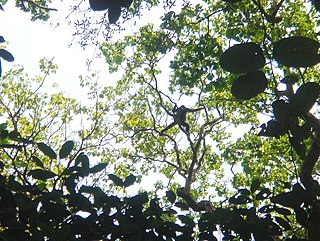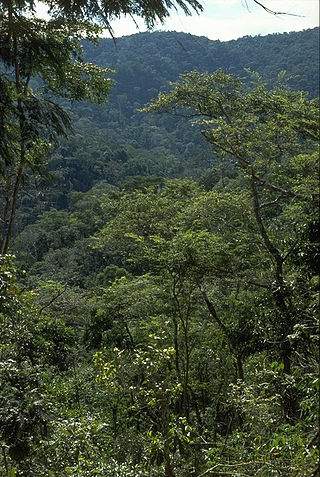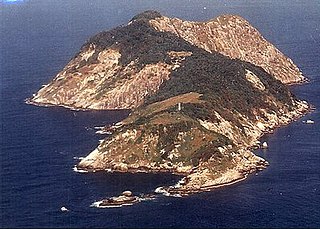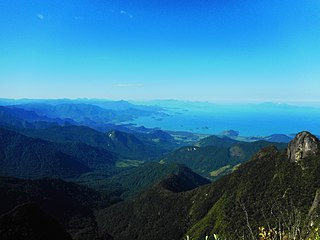
Protected areas of Brazil included various classes of area according to the National System of Nature Conservation Units (SNUC), a formal, unified system for federal, state and municipal parks created in 2000.

Protected areas of Brazil included various classes of area according to the National System of Nature Conservation Units (SNUC), a formal, unified system for federal, state and municipal parks created in 2000.

Protected areas, also called conservation units, are divided into different categories according to their goals. These are defined by Law No. 9.985 of 18 July 2000, which established the National System of Nature Conservation Units (SNUC). Objectives include conservation of nature, sustainable development, scientific research, education and eco-tourism. Fully protected units are expected to maintain the natural ecosystem without human interference. Sustainable use units allow sustained use of renewable environmental resources while maintaining biodiversity and other ecological attributes. [1] The Chico Mendes Institute for Biodiversity Conservation, which administers Federal units, defines the fully protected (proteção integral) classes of unit as: [2]

The sustainable use units are: [2]
In addition, some states designate areas as ecological reserve (Portuguese : Reserva Ecológica).
Although not technically protected areas, indigenous territories (Portuguese : Terras Indígenas) give the indigenous people full rights over the area, and serve as an obstacle to deforestation, mining and large-scale agriculture. As of 2016 there were 700 Indigenous Territories in Brazil, covering about 13.8% of the country's land area. Most of them were in the Amazon Legal. [3]

The SNUC law defines a protected area mosaic as a collection of protected areas of the same or different categories that are near to each other, adjoining each other or overlapping, and that should be managed as a whole. Given the different categories of conservation unit and other protected areas in a mosaic, the different conservation goals must be considered. [4] In addition to fully protected and sustainable use conservation units a mosaic may include private lands and indigenous territories. [4]
The SNUC law also recognises ecological corridors as portions of natural or semi-natural ecosystems linking protected areas that allow gene flow and movement of biota, recolonization of degraded areas and maintenance of viable populations larger than would be possible with individual units. The federal Ecological Corridor Project has its roots at least as far back as 1993. It has identified seven major corridors, with focus on implementing and learning from the Central Amazon Corridor and the Central Atlantic Forest Corridor. [5]
As of 2004 federally-administered conservation units covered 7.23% of Brazilian territory, below the level of 10% recommended by the International Union for Conservation of Nature. [6] Federal coverage was: [7]
| Type | Protected area (ha) | Total area (ha) | Percentage Protected |
|---|---|---|---|
| Fully protected | 28,147,214.93 | 854,546,635.67 | 3.29% |
| Sustainable use | 33,663,938.75 | 854,546,635.67 | 3.94% |
| totals | 61,811,153.68 | 854,546,635.67 | 7.23% |
Levels of protection vary considerably depending on the biome. Federal coverage as of 2005 was: [7]
| Biome | Total area (km2) | Percentage Protected |
|---|---|---|
| Amazon | 4,239,000 | 13.40% |
| Cerrado | 2,116,000 | 4.10% |
| Atlantic Forest | 1,.076,000 | 2.01% |
| Pantanal | 142,500 | 1.10% |
| Caatinga | 736,800 | 0.91% |
Protected areas are subject to reduction, reclassification or declassification (RRD). Between 1981 and 2010 an area of 45,000,000 hectares (110,000,000 acres) was downgraded or lost in this way, with almost 70% of cases occurring since 2008. The main cause was making land available for hydroelectric dams in the Amazon region. Other reasons were property speculation and agribusiness. [8]
The Jutaí-Solimões Ecological Station is an ecological station in the state of Amazonas, Brazil. It protects an area of flooded and terra firme forest in the Amazon biome.
The Castanheiras Pied Tamarin Wildlife Refuge, formerly Castanheiras Pied Tamarin Ecological Reserve, is a wildlife refuge in the municipality of Manaus, Amazonas, Brazil. It was created in 1982 to protect a colony of pied tamarins.

An extractive reserve is a type of sustainable use protected area in Brazil. The land is publicly owned, but the people who live there have the right to traditional extractive practices, such as hunting, fishing and harvesting wild plants.

A private natural heritage reserve is a type of preservation area in Brazil. The land is owned privately and may be used for research, education, eco-tourism and recreation. However, this use must be compatible with the goals of preserving the environment and maintaining biodiversity. Although the private reserves have been criticized, they are a valuable complement to publicly owned reserves.

An area of relevant ecological interest is a type of protected area of Brazil with unusual natural features and with little or no human occupation.

A wildlife reserve is a type of sustainable use protected area of Brazil. As of 2016 no conservation units had been created in this category.
The Roraima National Forest is a national forest in the state of Roraima, Brazil.
The Amazonas National Forest is a national forest in the state of Amazonas, Brazil.
Rio Ronuro Ecological Station is an ecological station in the state of Mato Grosso, Brazil. It protects an area of contact between Amazon rainforest in the north and Cerrado semi-deciduous forest in the south. Since being created in 1998 it has been reduced in size and has suffered from significant deforestation.
The Rio Roosevelt Ecological Station is an ecological station in the state of Mato Grosso, Brazil.

Terra do Meio Ecological Station is an ecological station (ESEC) in the state of Pará, Brazil.

Itaituba II National Forest is a national forest in the state of Pará, Brazil.
Tapirapé-Aquiri National Forest is a national forest in the state of Pará, Brazil. It is surrounded by other protected areas, so has suffered relatively little from deforestation.

A protected area mosaic or conservation unit mosaic in Brazil is a mosaic of nearby, adjoining or overlapping protected areas of Brazil that are managed as a whole.

The Bocaina Mosaic is a protected area mosaic on the border between Rio de Janeiro and São Paulo, Brazil. It provides coordinated management for a group of 10 federal, state and municipal conservation units covering an area of Atlantic Forest along the coast and up the slopes of the Bocaina plateau.

The Lower Rio Negro Mosaic (Portuguese: Mosaico do Baixo Rio Negro is a protected area mosaic in the state of Amazonas, Brazil. It coordinates between eleven conservation units of different types in the Amazon rainforest to the northwest of the state capital, Manaus.

The Central Amazon Ecological Corridor is an ecological corridor in the state of Amazonas, Brazil, that connects a number of conservation units in the Amazon rainforest. The objective is to maintain genetic connectivity between the protected areas without penalizing the local people, where possible using participatory planning that involves all affected actors.
The Jaci Paraná Extractive Reserve is an Extractive reserve in the state of Rondônia, Brazil. The traditional population is engaged in sustainable use of natural forest resources. It has been subject to illegal invasions by loggers and farmers. In 2014, an attempt was made to revoke the reserve.
The Bom Futuro National Forest is a national forest in the state of Rondônia, Brazil. The forest has been subject to a massive invasion of loggers, ranchers and farmers.